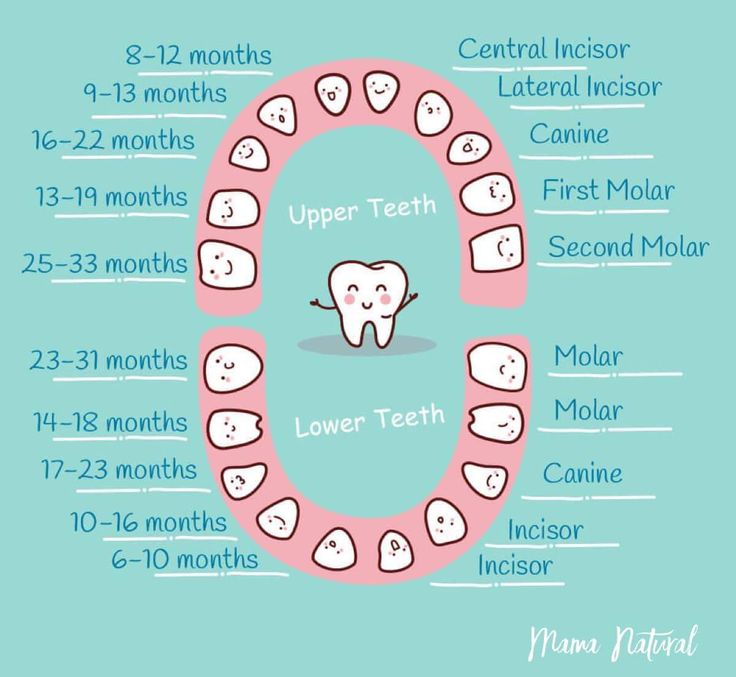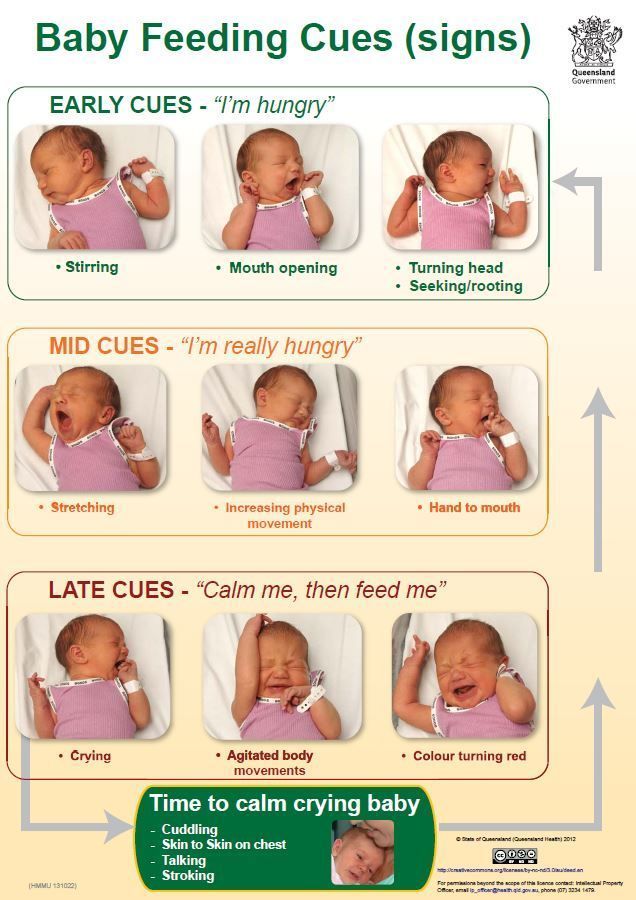Feeding premature babies at home
Feeding your premature baby at home
This content is mainly aimed that the person that will be trying to breastfeed their baby. But there is also information here about alternative methods of feeding, depending on your family’s health and circumstances.
Some people prefer to use the term ‘chest feeding’. If so, don’t be afraid to speak to your healthcare professional about your preferred use of language.
While you're in hospital
If you’re breast or bottle feeding your baby, the healthcare team may ask you to keep a record of how often they feed and for how long. The team at the hospital will help you know when and how often to feed your baby, depending on their individual needs.
If you’re using formula, you may also need to record how much milk your baby has taken at each feed. If they’re taking enough milk, they should be having 6–8 wet nappies a day.
But try to remember that when it comes to dirty nappies, every baby is different. Some will poo several times a day, other will poo less often, and some won’t even poo every day. The medical and nursing teams will help you recognise what is normal for your baby and know when to seek help.
You can read about feeding your premature baby in the hospital.
Can I tube feed my baby at home?
With support from the healthcare team, you may be able to tube feed your baby at home if you would like to and your baby is well enough.
Before you leave the baby unit, the healthcare team will show you how to tube feed your baby and who to contact if you have any problems at home. Once you’re home, the baby unit home team or community nursing team will show you how to help your baby learn to suck. This helps your baby gradually move from tube feeding to breast or bottle feeding.
Don’t worry if you don’t feel ready to look after your tube-fed baby at home. You can carry on caring for your baby in the baby unit until they are fully breast or bottle feeding until you’re ready to go home.
Breastfeeding at home
Giving your baby breast milk will help with their development and reduce their risk of infection.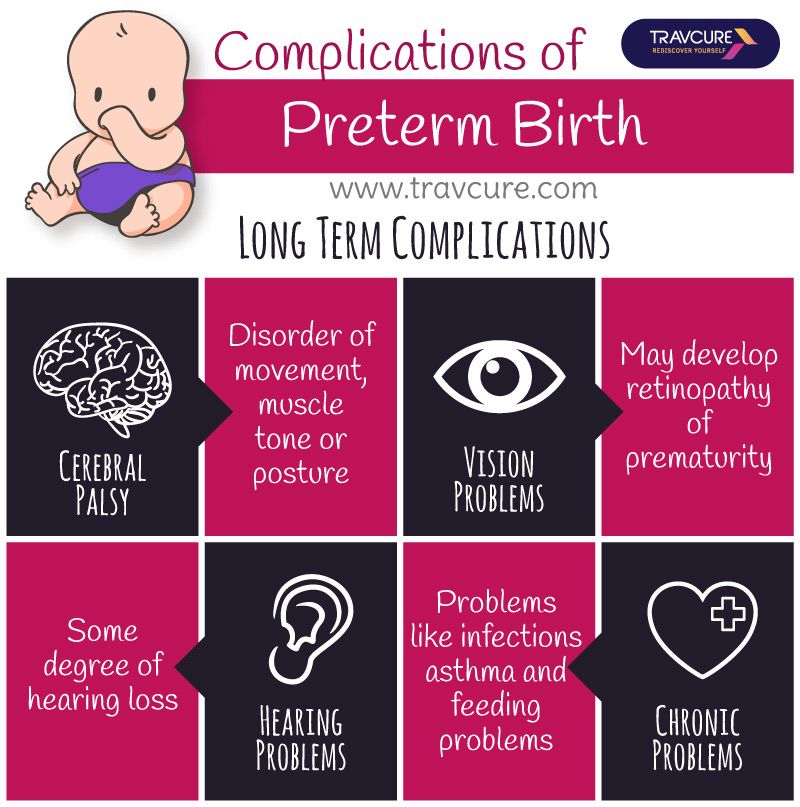 You may choose to breastfeed or give your baby bottles of expressed milk.
You may choose to breastfeed or give your baby bottles of expressed milk.
Premature babies can take a few weeks to learn how to breastfeed. If you have had difficulty breastfeeding, it can feel daunting to feed your baby at home without the support of the healthcare team. But there is still help available.
What is responsive feeding?
Responsive feeding is the idea that feeding isn’t only about nutrition. It’s also about love, comfort and reassurance between baby and mother. This means focusing all your attention on your baby during feeds and responding to their cues.
For example, you may offer your breast to your baby when your baby is hungry, distressed or irritable. Breastfeeding can help settle your baby during or after an immunisation or blood test, if your baby is unwell or to reassure them in an unfamiliar environment.
Some parents who aren’t breastfeeding may worry that they are missing an opportunity to bond with their baby. But you can still develop a loving relationship and strong emotional bond with your baby by formula feeding responsively. It is also a good opportunity for dads and partners to be involved in the feeding process.
It is also a good opportunity for dads and partners to be involved in the feeding process.
The UNICEF UK Baby Friendly Initiative suggests:
- sitting comfortably, holding your baby close and looking into their eyes while feeding
- holding your baby fairly upright, supporting their head
- brushing the teat against your baby’s lips – when they open their mouth wide, allow them to draw in the teat
- pulling gently on the corner of your baby’s mouth to release the teat if it becomes flattened during feeding
- offering your baby short breaks during the feed so they have a chance to burp
- supporting your baby to pace the feed – they can put their tongue over the hole to slow the flow or push the teat out of their mouth when they’ve had enough
- never forcing your baby to feed or take ‘all’ the milk if they don’t want it
- feeding your baby skin to skin – this means having your baby on you, their naked skin next to yours with a blanket over both of you for warmth.

Read more about responsive feeding
How do I know if breastfeeding is going well?
You will know breastfeeding is going well when your baby:
- is generally calm and relaxed during feeds and is content after most feeds
- is feeding for between 5 and 40 minutes at each feed (or a time that is normal for them)
- is not showing any signs of jaundice
- has wet and dirty nappies
- is gaining weight
- is swallowing frequently during the feed.
Remember to wind your baby after every feed.
Contact the community team or your health visitor as soon as possible if you have any questions or worries or if you feel you’re not coping. If you find breastfeeding painful, they can give you advice on how to position your baby so they are latching on correctly. Other possible causes of breast pain include thrush, a blocked milk duct or mastitis.
Thrush
If you still find breastfeeding painful after making sure your baby is latching on properly, your health visitor or GP may check to see if you have thrush. This is a fungal infection that can affect cracked or damaged nipples. Babies can also get thrush in their mouths.
This is a fungal infection that can affect cracked or damaged nipples. Babies can also get thrush in their mouths.
Thrush can cause severe pain in both nipples or breasts after a feed. If you have pain in only 1 breast, thrush is unlikely to be the cause. If your baby has oral thrush, they may:
- have creamy white patches on their lips or inside their mouth
- have nappy rash that doesn’t get better
- be unsettled when they’re feeding.
If you have thrush, your GP will treat you and your baby at the same time with an antifungal treatment. You can still breastfeed while you’re having treatment.
To prevent thrush spreading, it’s important to wash your hands carefully after changing nappies. You should also wash any dummies or toys your baby puts in their mouth.
The NHS website has more information about breastfeeding and thrush.
Blocked milk duct
In the early days, your breasts may get too full of milk, making them feel hard and painful.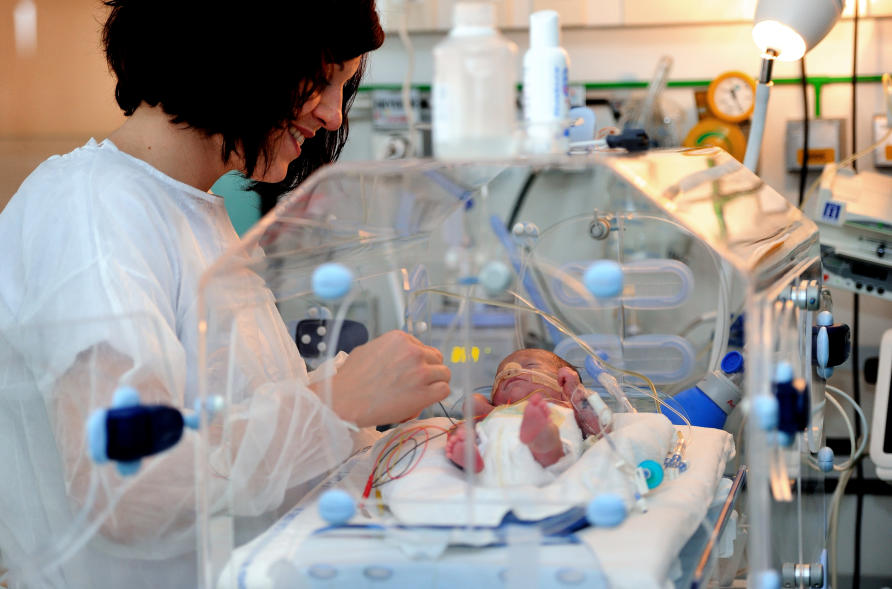 This is called engorgement. If this continues, it can lead to a blocked milk duct, which can cause a tender lump in your breast and pain while breastfeeding.
This is called engorgement. If this continues, it can lead to a blocked milk duct, which can cause a tender lump in your breast and pain while breastfeeding.
Feeding your baby regularly from the affected breast may help to clear the blockage. A warm shower or flannel may help your milk to flow more easily. You could also try gently massaging the lump towards the nipple during feeds.
Mastitis
If a blocked milk duct doesn’t get better, it can lead to mastitis. Symptoms include flu-like symptoms, such as a high temperature, and painful breasts. If you have these symptoms, it’s important to contact your GP or out-of-hours service as soon as possible.
Your GP may advise you to:
- continue breastfeeding or expressing, massaging the breast to clear any blockage – stopping breastfeeding can make symptoms worse
- take paracetamol or ibuprofen to relieve pain
- drink plenty of fluids.
Contact your GP again if your symptoms don’t get better after a few hours or if you feel worse. They may give you a type of antibiotic that you can take while breastfeeding.
They may give you a type of antibiotic that you can take while breastfeeding.
The NHS website has more information about mastitis.
Expressing milk at home
You may have expressed milk in hospital if your baby wasn’t able to breastfeed. Now that you’re home you may choose to express milk to store or for someone else to feed to your baby. You can express by hand or you can use an electric or hand pump.
Speak to your health visitor or GP straight away if you’re worried your milk supply is slowing down or stopping.
Tips for Feeding Premature Babies – Children’s Health
Share:
When babies are born prematurely (before 37 weeks of pregnancy), they may have special feeding and nutritional needs. Preemies often need extra support to grow and continue developing, and parents may have questions about breastfeeding, bottles or feeding schedules.
Kikelomo Babata, M.D., a neonatologist at Children's Health℠ and Assistant Professor at UT Southwestern, answers these questions and shares advice for feeding your premature baby.
What are common feeding problems in premature infants?
Premature babies may face different feeding problems depending on their age and development. "Post-conceptual age is more important than chronological age for a baby's development," explains Dr. Babata. "A 4-week-old infant born at 32 weeks may not be as developmentally ready to feed as a 2-week-old infant born at 35 weeks. And every baby is different."
Some premature babies have difficulty breastfeeding or bottle-feeding for the first few weeks of their lives. This is because infants, both full-term and premature, continue developing their ability to suck, swallow and breathe after birth. This is a skill they need to feed, so they can coordinate how to suck, swallow then breathe through their nose. Additionally, premature babies may be sleepy and get tired during their feeds.
Premature infants might also have underdeveloped lungs. They might need to be on oxygen, which can make it difficult for them to eat.
Other common feeding problems in premature babies can include:
- Apnea (episodes where they stop breathing)
- Episodes of bradycardia (slow heartbeat that can cause oxygen levels to drop)
- Immature feeding pattern (sucking, swallowing and breathing incorrectly or out of order)
- Oral aversion (not taking a bottle or breast)
- Risk of aspiration (breathing in milk or formula)
If your baby experiences these feeding problems, they may need to be fed through a feeding tube. This tube is placed through the nose and down into the esophagus. If your baby has a feeding tube, they'll stay in the hospital until it is removed.
Once your baby goes home, your pediatrician can offer tips on feeding your baby and the importance of good nutrition. If needed, they can refer you to speech therapist for more support.
Can I breastfeed my premature baby?
Yes, you can breastfeed a premature baby. Your breastfeeding experience may depend on your baby's development and nutritional needs.
Your breastfeeding experience may depend on your baby's development and nutritional needs.
Breastmilk offers many benefits for premature babies, such as:
- Boosting digestion
- Helping baby’s immune system fight infection
- Promoting eye and brain development
- Providing bonding opportunities
"Breastmilk is linked to a lower risk of necrotizing enterocolitis, an illness that can be devastating for preterm infants," says Dr. Babata. Necrotizing enterocolitis is inflammation that can seriously damage or destroy intestinal tissue in babies. It can increase their risk of death or neurodevelopmental problems.
Breastfed infants also have a lower risk of ear infections, respiratory infections like respiratory syncytial virus (RSV) and bronchiolitis, rashes and gastroenteritis. Breastfeeding can have long-lasting benefits as well – lowering your child's risk for chronic illnesses in the future.
Advice for breastfeeding a premature baby
It's important to know that breastfeeding a premature infant might look different than breastfeeding a full-term infant. Breastfeeding may take more coordination for a preemie than bottle feeding, and depending on how premature your baby is, they may have difficulty latching. You may need to use bottles for a few weeks if your baby is having difficulty nursing. You can still choose to pump and provide breastmilk in a bottle. See tips for increasing your milk supply while pumping and how to safely store your breast milk.
Breastfeeding may take more coordination for a preemie than bottle feeding, and depending on how premature your baby is, they may have difficulty latching. You may need to use bottles for a few weeks if your baby is having difficulty nursing. You can still choose to pump and provide breastmilk in a bottle. See tips for increasing your milk supply while pumping and how to safely store your breast milk.
If your premature baby can breastfeed, they still might need bottles of supplemental formula. Often, premature babies cannot exclusively breastfeed because they have higher caloric needs to support growth. Special high-calorie formula or human milk fortifiers can help your child grow while still getting the benefits of breastmilk.
If your premature baby is on a feeding tube, talk to your care team to learn what you can do and whether you should pump your breastmilk.
What type of bottle and formula is best for my premature infant?
Whether you give breastmilk or formula in a bottle, you should use a slow flow bottle nipple designed for premature infants. These bottle nipples help prevent your baby from getting more liquid than they can handle at once.
These bottle nipples help prevent your baby from getting more liquid than they can handle at once.
Most premature babies will use a special formula designed for preterm babies. Your pediatrician or neonatologist can recommend the right formula for your baby's needs. Depending on your baby's diet, they can also advise if any other nutritional supplements are needed, such as vitamin D or iron.
How much should I feed my premature baby and how often?
How much your baby needs to eat will change as they grow. Premature babies need 150 to 160 milliliters per kilogram of body weight each day. Your lactation consultant or pediatrician can help you determine how much this is for your baby.
No matter how much they eat per feeding, preemies need to eat at least every 3 to 4 hours.
When can my premature baby eat solids?
A premature baby can start eating solid foods when their adjusted or conceptual age is 4 to 6 months. A conceptual or adjusted age means that instead of counting your baby’s age from their date of birth, it's calculated from their due date. For instance, if your baby is born 10 weeks before their due date, their age at 10 weeks past their due date is 10 weeks (even though they were born 20 weeks ago).
A conceptual or adjusted age means that instead of counting your baby’s age from their date of birth, it's calculated from their due date. For instance, if your baby is born 10 weeks before their due date, their age at 10 weeks past their due date is 10 weeks (even though they were born 20 weeks ago).
Around the adjusted age of 4 to 6 months, premature babies should be able to support their head and have lost their tongue-thrust reflex. This reflex causes them to spit out anything put in their mouth that's not milk or formula. This is a good time to introduce solids.
Taking care of a baby is a challenging job. While these special feeding needs can add extra stress to those early days of your child's life, parents should remember that patience is key.
"Most babies will eventually learn to feed orally," says Dr. Babata. "Just take it one step at a time and be sure to notice and enjoy progress as it occurs."
Learn more
With the only nationally ranked Level IV NICU in North Texas, Children's Health provides expert multidisciplinary care for a wide variety of complex neonatal conditions. Learn more about our top-ranking Neonatology program.
Learn more about our top-ranking Neonatology program.
Children’s Health Family Newsletter
Get health tips and parenting advice from Children’s Health experts sent straight to your inbox twice a month. Sign up now.
Peculiarities of caring for premature babies at home
Each premature baby is purely individual, it differs from a full-term baby not only in appearance, its internal organs and systems are imperfect and not ready for extrauterine life.
The first days of life are of particular importance for premature babies. The first week of life of premature babies is allocated in a special period - the period of adaptation (adaptation) to new environmental conditions. The process of adaptation to extrauterine life in premature babies is longer and more difficult than in full-term babies. In very premature babies, it is 1.5-2 months.
Today, prematurity is not a critical diagnosis for a baby. Modern equipment and qualified specialists are able to organize an effective process of caring for premature babies in the first days of life. In the future, the care of the child falls entirely on the shoulders of the parents.
In the future, the care of the child falls entirely on the shoulders of the parents.
First of all, this is the creation of a favorable environment for the child, it is also necessary to protect him from external risk factors, such as infection and stress.
The first days after the birth of a premature baby
Pregnancy is almost always a joy. And happy parents begin to calculate the timing of childbirth in order to have time to prepare. But it often happens that the baby, contrary to the expectations of parents and doctors, is born ahead of schedule. Babies born before 37 weeks are called preterm.
As a rule, these children have a body weight and height that is much less than the established standards. The modern equipment available in the arsenal of doctors today, used in the care of premature babies, gives them a better chance of survival. But even 15-20 years ago, such kids had practically no chance.
The first days are the most critical and decisive. After all, his lungs have not yet fully developed, and it is difficult to breathe on his own. At this time, the child needs specialized care, which should be provided by doctors in the maternity hospital. They put him in a special box - a couvez, where a special microclimate is organized for him.
After all, his lungs have not yet fully developed, and it is difficult to breathe on his own. At this time, the child needs specialized care, which should be provided by doctors in the maternity hospital. They put him in a special box - a couvez, where a special microclimate is organized for him.
The microclimate in the incubator is comparable to the climate in the mother's womb, where the baby has been in the last months. The air mixture supplied there has a high percentage of oxygen content. All organs of the baby are still immature and he needs specialized care of medical personnel and constant monitoring.
But now the time has come for discharge, after which the child completely passes under the care of the parents. And if there are no particular problems with hospital provision of the necessary conditions, then parents need to be taught the rules for caring for premature babies, because at home it is rather difficult to protect him from various infections.
Features of caring for a premature baby at home
The main problem of is the underweight of the newborn. It is in the last weeks of pregnancy that the weight of the child increases and a protective fatty layer is formed, which provides sufficient skin nutrition. In this regard, parents have to pay great attention to the moments of newborn skin care, the fight against diaper rash and irritation.
It is in the last weeks of pregnancy that the weight of the child increases and a protective fatty layer is formed, which provides sufficient skin nutrition. In this regard, parents have to pay great attention to the moments of newborn skin care, the fight against diaper rash and irritation.
It is necessary to look through the delicate skin of the child at each swaddle. Careful attention should be paid to the choice of diapers. Preference should be given to soft natural fabrics, as well as carefully choose detergents and powders for washing baby clothes.
It is strictly contraindicated to swaddle the baby in an elastic manner. This will avoid chafing on the skin. But the main reason lies in the fact that the bones of the child and the respiratory organs are still weak, it can simply be difficult for him to breathe, moreover, the blood circulation does not yet function properly.
The next important point is ensuring optimal and comfortable temperature conditions in the house and in the baby's room in particular. The absence of subcutaneous fat makes the baby vulnerable to the surrounding climate, which makes the risk of infectious diseases many times higher. For this reason, the temperature regime should be monitored with a thermometer. The temperature in the room should be 22-24 o C.
Change your baby's clothes as soon as possible, using warm underwear and diapers. It should also be kept in closed spaces where it is easiest to provide the desired temperature: strollers, cradles. Overheating the baby is also dangerous, for this reason it is important to check the temperature around the baby regularly.
Feeding
Caring for a premature baby at home has a number of rules during feeding. This applies not only to compliance with the frequency of feeding procedures, but also to the features of the process. First of all, it is important to consider that the process of sucking for a premature baby is a lot of hard work. The lungs are still weak, and the process of sucking milk requires holding the breath. As an alternative to breastfeeding, expressing milk is often recommended. Then feed them to the baby through the nipple. After feeding, immediately put the child in the cradle or crib should not be. The fact is that premature babies spit up more often and more abundantly than healthy children. You should hold the child in your arms in an almost vertical position or laying on your shoulder.
Bathing
Bathing procedures should be daily. The water temperature should be 37 degrees, closer to six months, and as the baby gets stronger, you can lower it to 35 degrees in order to harden.
Walks
Walks should be more careful. In summer, they can be started already on the third day after discharge, and in winter - no earlier than 7 or even 10 days later. The duration of the walk is up to 15 minutes. The first exit can be limited to a 5-minute walk, and then gradually increase the time of walking with the baby on the street.
Anesthesiologist-resuscitator Ivashevich A. S.
S.
Breastfeeding a premature baby at home
Until now, your baby has been cared for in the neonatal intensive care unit. You have started breastfeeding. You are now ready to fully transition to breastfeeding at home. This information will help answer some of your questions about such care.
Preparing for your child's discharge
-
Express more milk than necessary. This stimulates the production of the maximum possible amount of milk. The more milk produced, the easier it is to feed the baby.
-
Find out your baby's weight at discharge from the neonatal intensive care unit. This will help you keep track of whether your baby is gaining weight at home.
Breastfeeding at home
-
Continue to use the positions recommended for premature babies until the baby weighs at least 2.
 5 kg (5-6 lbs). (Some more of these are listed below.)
5 kg (5-6 lbs). (Some more of these are listed below.) -
Try to feed your baby 8-12 times a day. You may be advised to feed your baby when he is hungry rather than on a schedule. This will make the child less tired. But in some cases, scheduled feeding is necessary to ensure that the baby is getting enough food. If you think that the child is hungry, you should feed him between the planned meals.
-
Before moving on to the second breast, the baby should receive the maximum amount of milk from the first. This is important because hindmilk (the last milk that comes out of the breast) contains more fat and calories than milk that comes out first.
-
Many doctors recommend expressing milk in addition to breastfeeding until your baby is exclusively breastfed and is growing and developing well without the need for additional formula or nutrition.
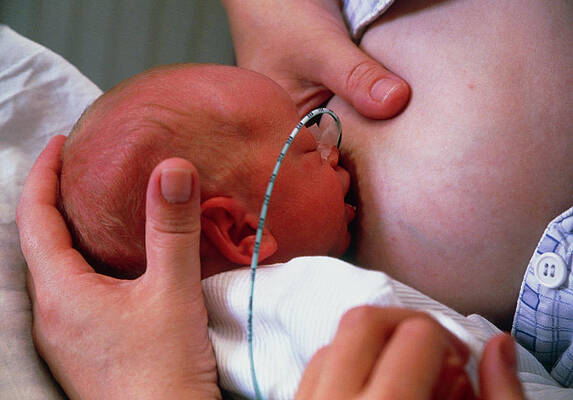 This will help increase or maintain breast milk production.
This will help increase or maintain breast milk production. -
If you have been prescribed nutritional supplements for your child, talk to your doctor about the best way to give them.
How do you know if your child is getting enough food?
Your pediatrician should determine your child's milk intake shortly after discharge. This can be done either during the appointment or over the phone. To make sure your child is getting enough food:
-
Count the number of wet and soiled diapers. Must have 8 wet diapers a day and at least 1 bowel movement.
-
During feeding, listen to see if the baby is swallowing milk. If you don't hear this, the baby may suckle at the breast but receive little or no milk.
-
After feeding, the breast should be soft and empty.
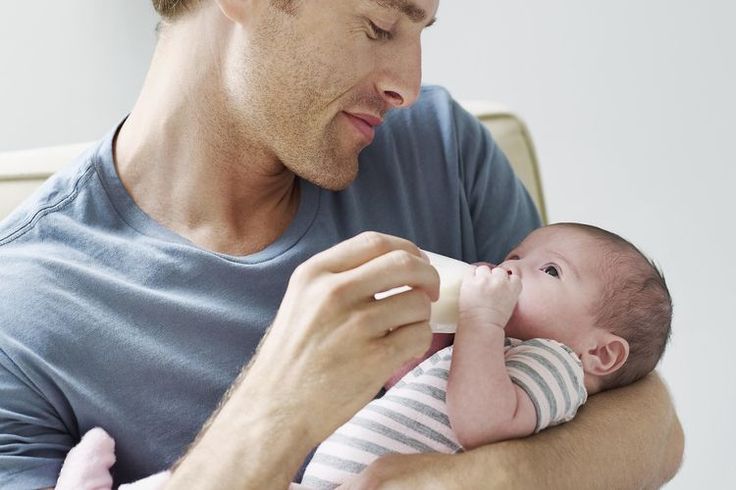 The child should look happy.
The child should look happy. -
The child is weighed at every visit to the pediatrician. You can also weigh your baby using a baby scale at home.
-
If you have problems breastfeeding, contact a lactation consultant. Find a local organization that supports breastfeeding mothers. Organizations like these can be an excellent resource for help on basic issues. This can be especially helpful if you are breastfeeding more than 1 baby!
Should I expect problems with breastfeeding due to preterm birth?
Breastfeeding a premature baby can be difficult at first. As the child begins to grow stronger, everything will be normal. These problems may include:
-
Difficulties with correct placement of the nipple in the mouth
-
Falling asleep at the breast at the start of feeding
-
Problems coordinating sucking, swallowing and breathing
-
Poor suckling (difficulty getting enough milk even with prolonged feeding)
-
Unpredictable sleep pattern
Breastfeeding positions
Premature babies should be fed in positions that provide extra support for the neck and head. These are the safest feeding positions for preterm babies:
These are the safest feeding positions for preterm babies:
Lying on the back
Sit in a reclining chair with your body bent at a 45° angle. In this position, a good place for your baby to fidget on their tummy is your chest. In this case, the entire body of the child is supported. The baby reflexively moves to the nipple, finds it and begins to suck. This is the most comfortable position for both of you. Your hand is free as the child is held by your body.
Football position
Place a pillow next to you on the side of the breast you are going to feed your baby. Place your baby on a pillow at chest level. Support the baby's head with the palm of your hand. Use your forearm to support your child's shoulders and back. The child's legs should pass between your arm and the body. If you are breastfeeding twins (twins), this position will allow you to breastfeed both babies at the same time.
Cradle position
Place a pillow on your knees and place the baby on it at chest level.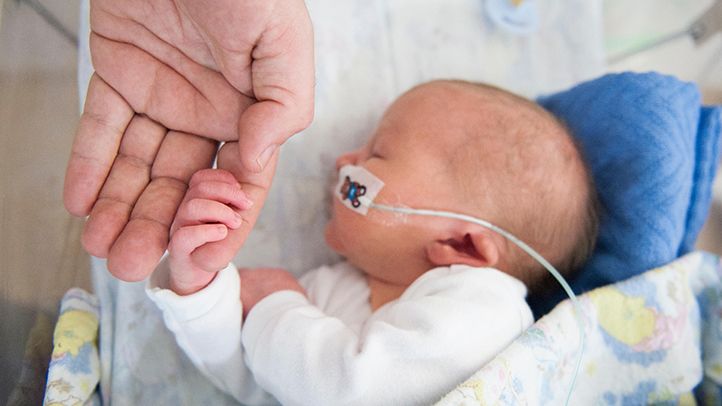 Support the baby's head and neck with the opposite hand to the breast you will be feeding. Support the baby's head by the back of the head below the level of the ears. Support your chest with your other hand.
Support the baby's head and neck with the opposite hand to the breast you will be feeding. Support the baby's head by the back of the head below the level of the ears. Support your chest with your other hand.
© 2000-2022 The StayWell Company, LLC. All rights reserved. This information is not intended as a substitute for professional medical care. Always follow your healthcare professional's instructions.
Was this helpful?
Yes no
Tell us more.
Check all that apply.
Wrong topic—not what I was looking for.
It was hard to understand.
It didn't answer any of my questions.
I still don't know what to do next.





